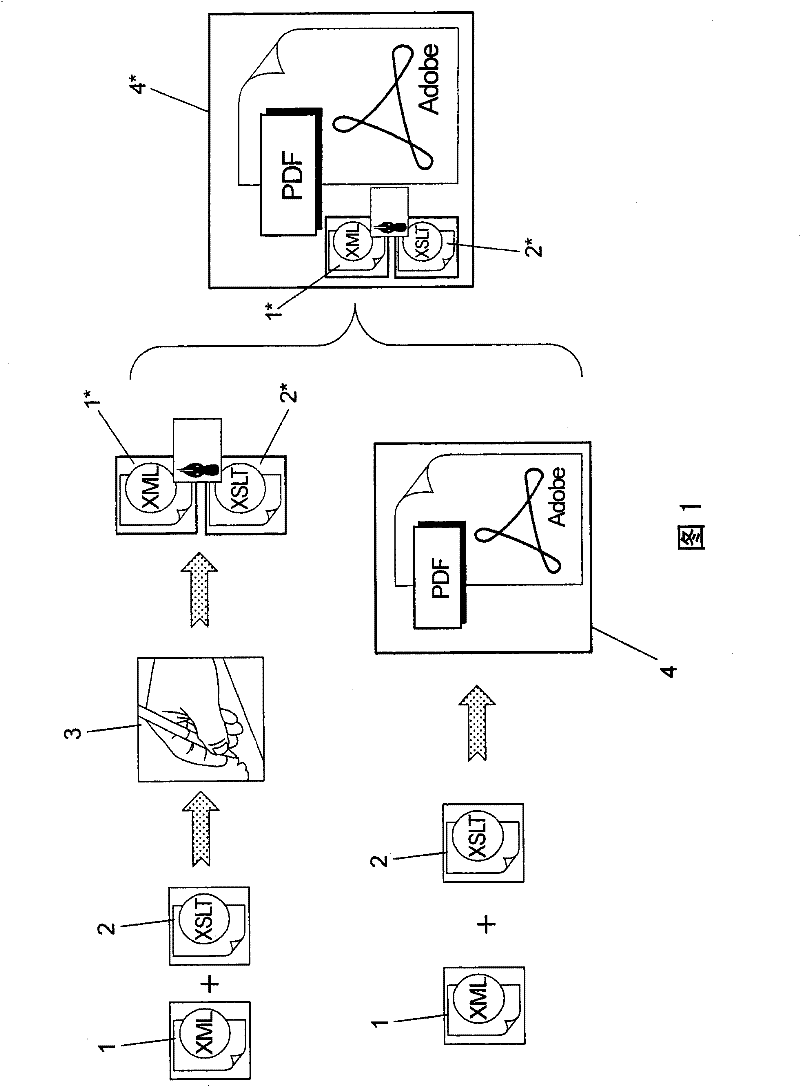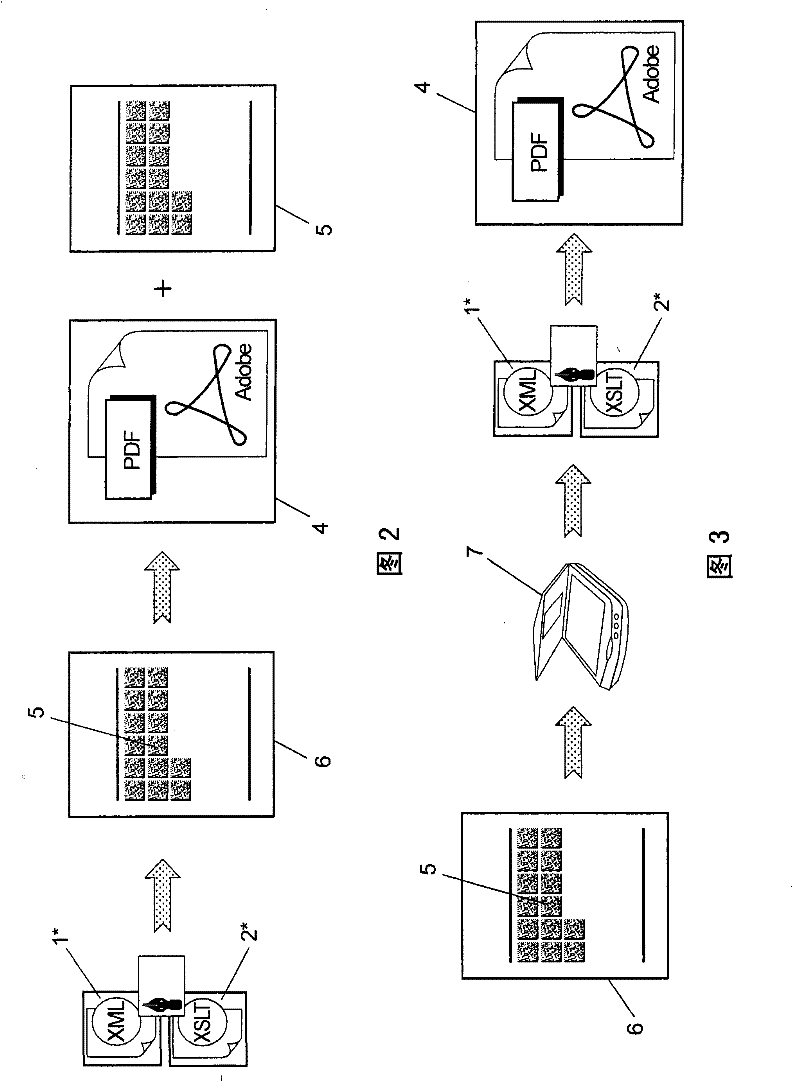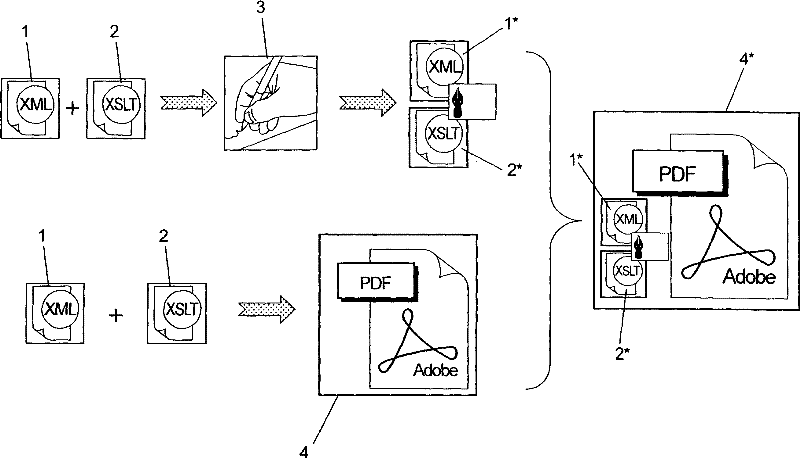Method for generating human-readable and machine-readable documents
A technology of human beings and documents, applied in the direction of instruments, computer security devices, special data processing applications, etc., can solve problems such as tampering of meaning
- Summary
- Abstract
- Description
- Claims
- Application Information
AI Technical Summary
Problems solved by technology
Method used
Image
Examples
Embodiment Construction
[0024] figure 1 The process chain at the top shows the creation of signed data record 1 * and signed semantics 2 * process chain diagram. It is assumed that the chosen language standard for representing data records 1 is XML, which is considered to be a widely used standard for creating machine-readable and human-readable documents. For the semantic description of data content, a technique called XSL transformation 2 is used. XSL transformation 2 uses a technique called XSLT stylesheet 2 to transform data 1 using XML. XSLT stylesheet 2 adds XML data 1 to Describe the semantics of the data. in reference figure 1 In the method steps shown by symbol 3 in , the data 1 represented by the XML standard and the semantics 2 represented by the XSLT transformation are signed separately or signed together using a known signature technology, such as XML-DSIG. The result obtained is the signed data record 1 * and the semantics of the corresponding signature 2 * .
[0025] Separately...
PUM
 Login to View More
Login to View More Abstract
Description
Claims
Application Information
 Login to View More
Login to View More - R&D
- Intellectual Property
- Life Sciences
- Materials
- Tech Scout
- Unparalleled Data Quality
- Higher Quality Content
- 60% Fewer Hallucinations
Browse by: Latest US Patents, China's latest patents, Technical Efficacy Thesaurus, Application Domain, Technology Topic, Popular Technical Reports.
© 2025 PatSnap. All rights reserved.Legal|Privacy policy|Modern Slavery Act Transparency Statement|Sitemap|About US| Contact US: help@patsnap.com



